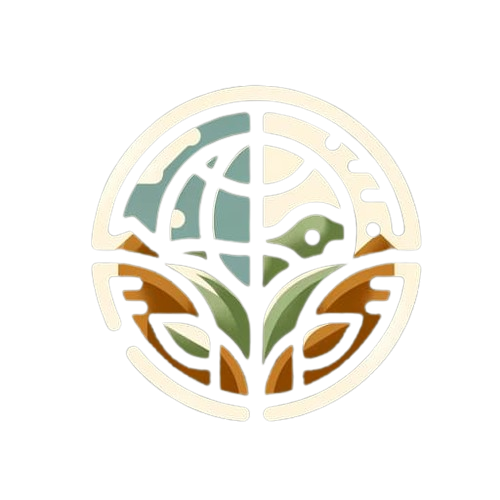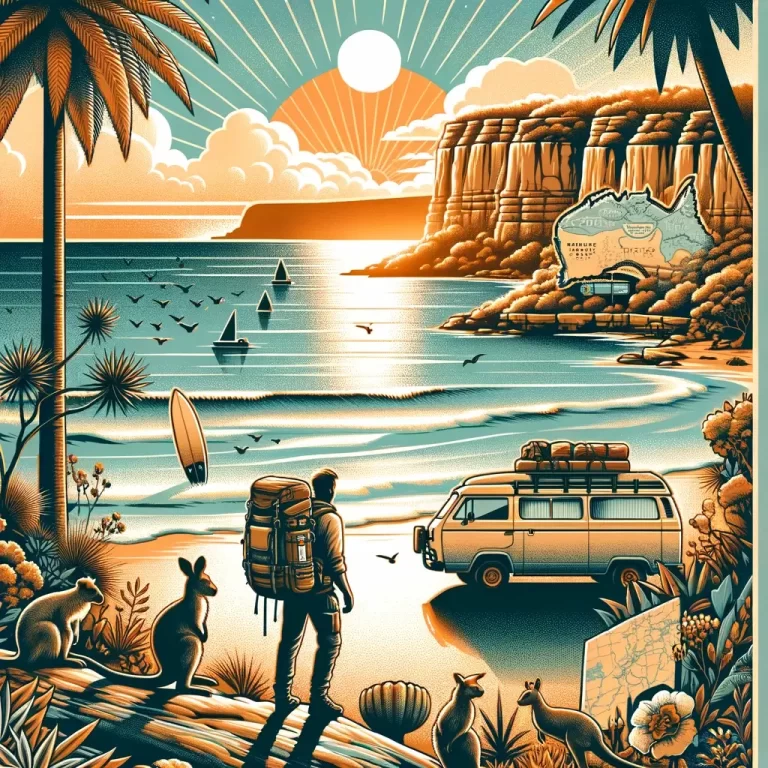The Scariest Australian Animals
Ever felt the thrill of exploring a place where nature’s wild side is just around the corner? Australia, with its sun-kissed beaches and sprawling outback, offers more than just picturesque landscapes. It’s home to some of the world’s most daunting creatures that can send chills down your spine.
From venomous snakes slithering through the bush to spiders lurking in unexpected places, Australia’s wildlife isn’t for the faint-hearted. As an adventurer seeking unique experiences, understanding the scariest Australian animals adds another layer to your travel tales and ensures you’re prepared for anything Mother Nature throws your way.
Why does this matter? Well, if you’re like me—constantly on the hunt for extraordinary adventures—you’ll want to know what dangers might be hiding in plain sight. Plus, exploring these natural encounters responsibly means you can enjoy your journey while respecting local ecosystems.
I remember my first encounter with a redback spider during a camping trip near Sydney. It was both terrifying and exhilarating! That experience taught me valuable lessons about staying alert and appreciating Australia’s untamed beauty.
Let’s jump into some of Australia’s scariest animals, share tips on how to stay safe around them, and explore why these creatures are essential to their habitats. For more insights on traveling through Australia’s wild side check out our Aussie articles section.
Top Scariest Australian Animals and How to Stay
Safe
Australia’s diverse ecosystem hosts some of the world’s scariest creatures. From venomous snakes to creepy spiders, these animals contribute to Australia’s unique allure. Understanding their behaviors and habitats enhances your adventure travel experience.
As someone who loves exploring unique paths and capturing stunning photographs, I find these creepy Australian animals both fascinating and terrifying.
Let’s jump into my top of Australia’s scariest animals (there are definitely others that don’t make the list, from cone shells to rockfish, but that doesn’t say they aren’t scary as well!)
Venomous Snakes: Threats Slithering in the Grass, Forests or Deserts
Australia is home to several venomous snakes that can pose significant threats if encountered, including the eastern brown snake and inland taipan.
These snakes inhabit various environments, such as deserts and forests.

The Inland Taipan, also known as the “fierce snake,” holds the title for the most venomous snake globally. Its venom can cause paralysis and death within hours if untreated. While hiking or exploring grasslands, always wear sturdy boots and stay on marked trails to avoid unwanted encounters.
On my trip to Queensland’s outback, I carried a compression bandage in my backpack as part of my first-aid kit. This simple precaution can save lives when dealing with snake bites.
For safety:
- Stay on marked trails: This reduces encounters.
- Wear protective clothing: Boots and long pants help prevent bites.
- Learn first aid: Knowing how to respond can be crucial in emergencies.
Deadly Spiders: A Closer Look at Australia’s Arachnids
Australian spiders are infamous for their deadly bites. The Sydney Funnel-Web Spider tops the list with its potent neurotoxic venom. These spiders often hide in moist environments like gardens and woodpiles, so it’s crucial to check your gear before setting up camp or handling firewood.

During an eco-tourism adventure near Sydney, I learned from locals how to identify spider burrows and avoid them while camping. Knowledge like this enhances safety without dampening the thrill of exploration.
The Sydney funnel-web spider stands out. It’s known for its potent venom and aggressive behavior. You might find it in moist areas like gardens or forests.
How To Stay Safe:
- Check shoes and clothes: Spiders often hide in them.
- Use insect repellent: This keeps spiders at bay.
- Seal entry points: Prevents spiders from entering homes or tents.
Box Jellyfish: Dangers in the Water
Scary Australian animals aren’t limited to land; the ocean has its share too. Box jellyfish and blue-ringed octopuses are particularly dangerous marine stingers found along Australia’s coastlines.

The Box Jellyfish is one of the deadliest marine stingers found along Australia’s northern coastlines. Its tentacles deliver toxins causing extreme pain, cardiac arrest, or even death within minutes. Wearing protective stinger suits when swimming or snorkeling during jellyfish season (November to May) reduces risks significantly.
Tips for Safe Swimming:
- Swim in netted areas: These zones are safer from jellyfish.
- Wear a stinger suit: Protects jellyfish tentacles.
- Observe local warnings: Follow advice from lifeguards and signs.
Saltwater Crocodile: The Apex Predator
Saltwater crocodiles are formidable apex predators inhabiting Northern Australia’s rivers and coastlines. They grow up to 23 feet long and have powerful jaws capable of crushing bones instantly. When traveling through croc country, heed warning signs near water bodies and avoid swimming in unmarked areas.

In Kakadu National Park, guided tours provided insights on spotting crocodile habitats safely from a distance—a perfect blend of adventure travel and cultural immersion that left me awe-struck but cautious.
Saltwater crocodiles are among Australia’s scariest things, residing mainly in northern regions’ rivers and coastal areas.
Safety Measures:
- Avoid swimming in croc-infested waters: Always heed warning signs.
- Stay away from water edges: Crocodiles often lurk near shores.
- Travel with guides: Local experts know safe pathways.
Human Interactions and Safety Measures
Australia’s wildlife offers thrilling encounters, but safety is crucial. Here are some key tips to consider when exploring areas with scary creatures in Australia.
How to Stay Safe Around Dangerous Australian Animals
Knowing how to stay safe around Australia’s scariest animals can enhance your adventure. Follow these steps:
- Wear Protective Gear: Always wear appropriate clothing and footwear. For example, long pants and boots can protect against snake bites.
- Stay on Marked Trails: Stick to designated paths in parks and reserves. Venturing off trails increases the risk of encountering dangerous wildlife like saltwater crocodiles or venomous snakes.
- Use Insect Repellent: Apply insect repellent to ward off insects such as spiders and mosquitoes that might carry diseases.
- Learn First Aid: Equip yourself with basic first aid knowledge for bites or stings from creepy Australian animals like box jellyfish or funnel-web spiders.
- Respect Wildlife Boundaries: Maintain a safe distance from all animals, including kangaroos and dingoes, which can be unpredictable if provoked.
I remember hiking in the Daintree Rainforest where I encountered a snake on the trail—staying calm and slowly backing away kept me safe.
Contributions of Australian Wildlife to Biodiversity
Understanding the role of Australia’s scariest things in biodiversity helps us appreciate their importance:
- Predators Control Populations: Apex predators like saltwater crocodiles regulate populations of other species, maintaining ecological balance.
- Pollinators Enable Plant Growth: Some bats and birds pollinate native plants, essential for ecosystem health.
- Decomposers Recycle Nutrients: Creatures like ants break down organic material, enriching soil fertility.
These scary Australian animals play vital roles in their habitats, contributing significantly to global biodiversity.
The Role of Conservation Efforts
Conservation efforts play a crucial role in protecting Australia’s unique and often intimidating wildlife. By preserving habitats and promoting sustainable practices, we ensure the safety and survival of these species.
Protecting the Habitat of Scary Creatures
Protecting the habitat of scary creatures like saltwater crocodiles and venomous snakes is essential for maintaining ecological balance. When exploring regions with these animals, I always support local conservation projects that focus on habitat restoration. For example, organizations working in Kakadu National Park help restore wetlands, benefiting both crocodiles and bird species.
Engaging in eco-tourism can also make a difference. By choosing eco-friendly accommodations and tours, adventurers contribute to conservation funds. On my trips, I prefer staying at lodges that invest part of their revenue into local conservation projects. This not only supports biodiversity but also enhances my travel experience by offering insights into sustainable practices.
Community Involvement in Conservation
Community involvement is vital for successful conservation efforts. Local communities often possess traditional knowledge about managing wildlife habitats effectively. During my visit to the Daintree Rainforest, guides from the Kuku Yalanji tribe shared valuable information on coexisting with dangerous animals like cassowaries and spiders.
Supporting community-led initiatives can amplify conservation impact. I’ve found that participating in volunteer programs or donating to grassroots organizations makes a tangible difference. Such actions empower communities to protect their environment while fostering cultural connections—a key interest for many adventure travelers.
Research and Education
Research and education are foundational pillars for effective conservation strategies. Scientists studying scary Australian animals provide critical data that inform protective measures. For instance, research on the breeding habits of funnel-web spiders helps develop safer interaction guidelines for tourists.
Educational programs raise awareness about these creepy creatures among visitors and locals alike. Whenever I encounter educational exhibits or workshops during my travels, I make it a point to participate—learning how to respect wildlife boundaries while enhancing my understanding of Australia’s scariest things enriches my journey.
Eco-friendly Practices
While exploring places with scary creatures, eco-friendly practices ensure minimal impact on their habitats:
- Leave no trace: Carry out all waste.
- Respect wildlife boundaries: Don’t disturb animals or their habitats.
- Support conservation efforts: Choose eco-tour operators that contribute to preserving nature.
Key Takeaways
- Australia’s Diverse Ecosystem: Australia is home to some of the world’s scariest creatures, including venomous snakes, creepy spiders, and dangerous marine stingers, contributing to its unique allure for adventurous travelers.
- Safety Measures: To stay safe around these animals, follow essential tips like wearing protective clothing, staying on marked trails, using insect repellent, and learning basic first aid.
- Marine Hazards: Box jellyfish and blue-ringed octopuses are among the most dangerous marine stingers in Australian waters. Swimming in netted areas and wearing stinger suits can significantly reduce risks.
- Conservation Efforts: Protecting the habitats of Australia’s scary creatures is crucial for maintaining ecological balance. Engaging in eco-tourism and supporting local conservation projects can help preserve these unique species.
- Community Involvement: Local communities play a vital role in conservation efforts. Supporting community-led initiatives enhances wildlife protection while fostering cultural connections and sustainable practices.
Final Remarks
Exploring the scariest Australian animals has been quite an adventure, hasn’t it? While these creatures can be intimidating, they play essential roles in their ecosystems. By respecting wildlife boundaries and supporting conservation efforts, we can coexist with them safely and responsibly.
Engaging with local communities and learning from indigenous tribes adds valuable insight into preserving these amazing species. With continued research and education, we can all contribute to protecting Australia’s unique wildlife.
Remember, next time you encounter one of these fascinating creatures, appreciate their beauty and importance in nature. Stay safe out there!
Frequently Asked Questions
What are the key safety measures when encountering Australia’s wildlife?
When encountering Australia’s wildlife, always maintain a safe distance, avoid sudden movements, and never attempt to feed or touch animals. Follow local guidelines and signs, wear appropriate clothing, and carry a first aid kit for emergencies.
Why is it important to respect wildlife boundaries in Australia?
Respecting wildlife boundaries helps prevent dangerous encounters and protects both humans and animals. It ensures that you don’t disturb their natural behavior or habitat, contributing to conservation efforts.
How does habitat preservation contribute to protecting Australian wildlife?
Habitat preservation ensures that animals have a safe place to live and breed. By protecting natural habitats from destruction and pollution, we help sustain biodiversity and support the survival of various species.
What role does eco-tourism play in Australian wildlife conservation?
Eco-tourism promotes sustainable travel practices that minimize environmental impact while raising awareness about conservation. It generates funds that can be reinvested into preserving habitats and supporting local communities.
How can community involvement enhance conservation efforts in Australia?
Community involvement brings together diverse perspectives and resources. Indigenous tribes like the Kuku Yalanji offer valuable traditional knowledge on sustainable living practices that benefit both people and nature.
Why is research important for understanding scary Australian animals?
Research provides insights into the behavior, habitat needs, and threats facing scary animals like venomous snakes and crocodiles. This information is crucial for developing effective conservation strategies.
What educational initiatives support wildlife conservation in Australia?
Educational programs raise awareness about the importance of conserving Australia’s unique fauna. Schools, workshops, and public campaigns teach people how to coexist with wildlife responsibly.
How can individuals support local initiatives aimed at protecting Australian wildlife?
Individuals can support by donating to conservation organizations, volunteering for local projects, participating in citizen science programs, or simply spreading awareness about the importance of preserving Australia’s natural heritage.







